Ain`t much to go wrong and the wife can shoot it with no problems.
It`s a 12 ga. Herculie's that the stock had been refinished and the forearm is not original on so cut it off to 20 inch.
Look Terry it`s a lever shotgun.
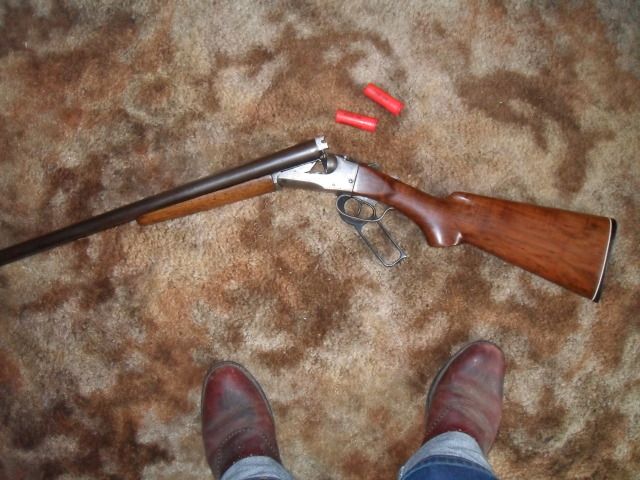
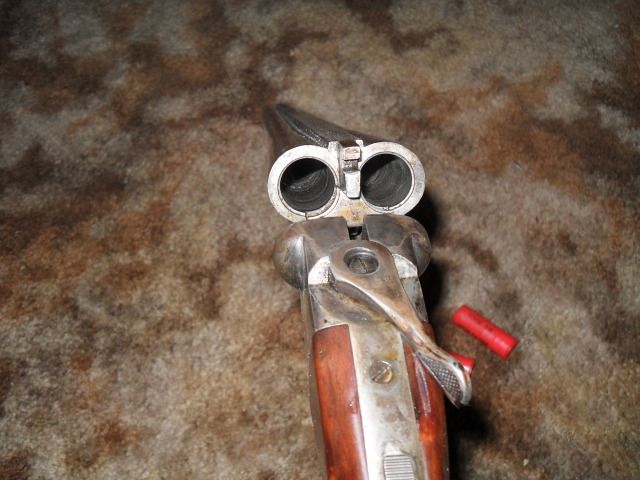




We can fix that.Rusty wrote:That's nice Pitchy. My problem is my CFO likes the CLACK,CLACK of a pump action being cycled. I guess I'm stuck with my Wi
ngmaster.
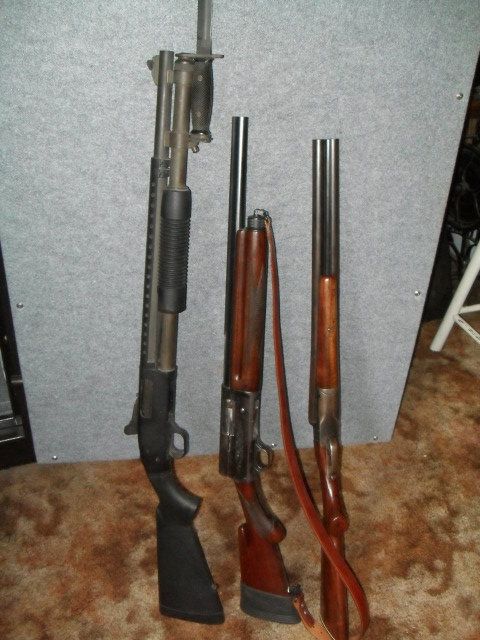
Basically the same gun, i think mine is a 315 or somethin.C. Cash wrote:My Stevens 311 guards the house!
+1. Although I personally, prefer a short gun for indoors work and a short rifle for "yard" work!Rusty wrote:That's nice Pitchy. My problem is my CFO likes the CLACK,CLACK of a pump action being cycled. I guess I'm stuck with my Wi
ngmaster.
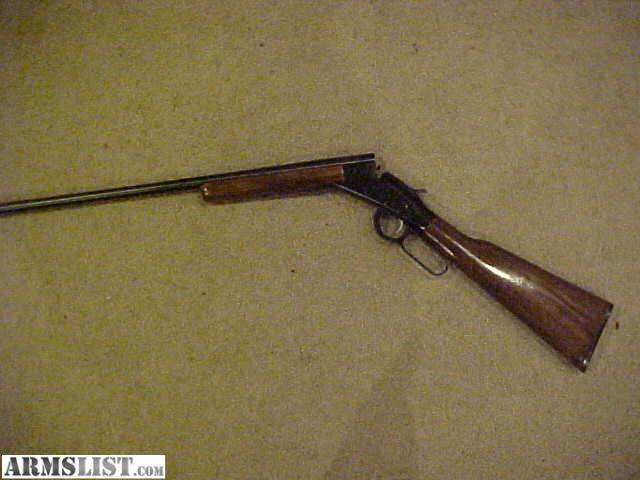
The main reason i don`t like the Auto-5 is it`s hard to reload, the early ones anyway.MrMurphy wrote:I tend towards a rifle before a shotgun for indoor work, and a pump over a double due to training and experience, but a smart person with a double barrel can still take care of things, assuming you don't need a reload.
Took a little thought before i cut this ole girl off but they arn`t worth alot in the shape mine was in.Mescalero wrote:My 311 parts gun/ builder ( which will shoot right now ) is still original length.
The question now is, should I cut the barrels or not?
I prefer the Auto-5, and keep an old one for HD, because it's a little safer to keep more or less ready to go, and if it gets in the wrong hands, it takes a little more skill to operate, but that's not a problem for me. I keep the mag loaded, chamber empty with the magazine cut off engaged. That way a kid or someone can work the slide but no shell jumps into the barrel, but but all I have to do is pull the slide back and hit the cut off lever and I am ready to rock and roll.Pitchy wrote:The main reason i don`t like the Auto-5 is it`s hard to reload, the early ones anyway.MrMurphy wrote:I tend towards a rifle before a shotgun for indoor work, and a pump over a double due to training and experience, but a smart person with a double barrel can still take care of things, assuming you don't need a reload.
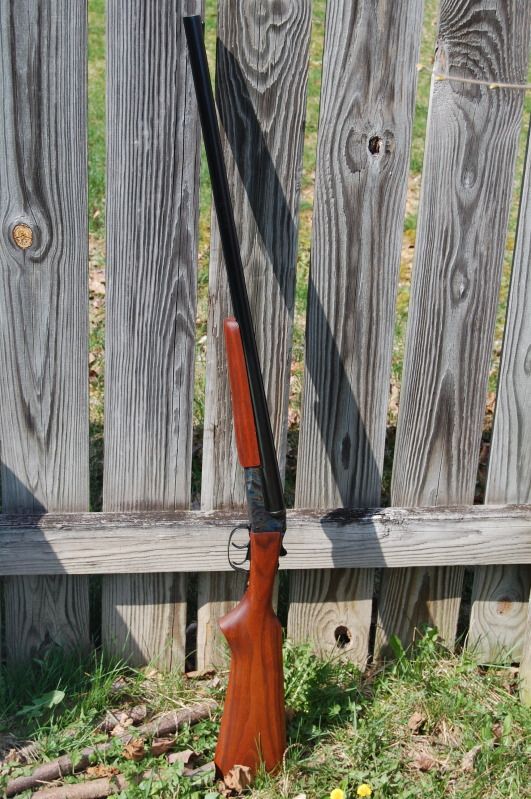


In that that catalog was issued in 1914, and the 311 didn't come along until the 1930s... I'd think the mdl 315 predates the 311 and from that description, is the better of the 2, and may account for why the 311 is probably the easiest to find. Wood sculpting may have changed over the period of production... as the 311 was still being offered under the Savage label into the 1970s I believe. But, will admit that I haven't researched it very thoroughly. I do know that many of the internal parts are interchangeable with both the Stevens/Savage mdls 311, 315, and some of the ones on the 330; as I've had to replace several of the internals in my Riverside gun over the years I've used it CAS. Not very long, as I quickly bought a IGA Stoeger "Coach Gun" as the 315 doesn't fully open to allow shells to just drop in the chambers without modification. I still use it on occasion as it's a "looker"! And sometimes one just has to up his "style points!"Apr. 20, 1915, refers to the patent date of Patent No. 1,136,247 granted to G.S. Lewis and assigned to the J. Stevens Arms & Tool Co. of Chicopee Falls, Mass. This patent covers a hammerless double with coil-spring driven strikers, rather than internal hammers rotating about an axle. From the time of the patent until WW-II this action was used on a number of different Stevens, Riverside and Springfield doubles as well as many marked with a variety of "trade names."
The gun of this design was introduced in 12- and 16-gauge as the Riverside No. 315 in the J. Stevens Arms & Tool Co. Catalogue No. 54, with a list price of $16.50. The plants of the J. Stevens Arms & Tool Co. were taken over by, as I recall, New England Westinghouse for wartime production during WW-I. After The Great War they were sold off to Savage Arms Corp. and became J. Stevens Arms Co. (NOTE: That's not quite right, Stevens continued until 1940 when they were bought out by Savage... Researcher1 has his dates slightly wrong... -_ Rick)
J. Stevens Arms Co. continued to make this gun during the 1920s as the Riverside No. 315. By 1923 they introduced a slightly upscale version called the Stevens No. 330. The Stevens No. 330 came with a capped pistol grip walnut stock, while the Riverside had a half-pistol grip walnut stock. By 1925 the 20-gauge and .410-bore were added to the offerings. By 1930 J. Stevens dropped the Riverside name for their lower priced line and started using the Springfield Arms Co. name.
For 1931 they introduced the Springfield No. 311 which was a similar gun but with an uncheckered "walnut finish" stock. For 1930 J. Stevens Arms Co. began offering the Stevens No. 330 with a Jostam Anti-Flinch recoil pad and Lyman twin ivory sights. By 1937 they made a few cosmetic changes and the gun became the Stevens No. 530. These G.S. Lewis designed guns remained in the line up to WW-II.
While I don't know if that is the original configuration, as mine is serial 717x, est. build date of 1916, and was stocked as you see it when I bought it... although I did cut the barrels from 28" to 20". The stocks were made by Fajen.Mescalero wrote:Thanks for the close up Griff,
Now I know how to finish that stock to the action.

